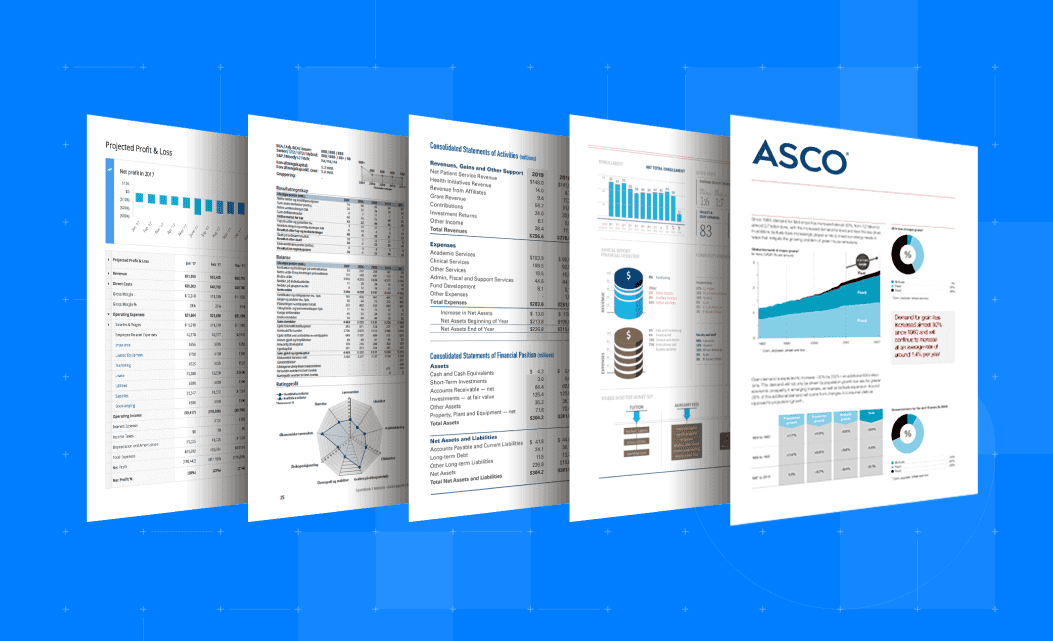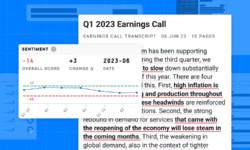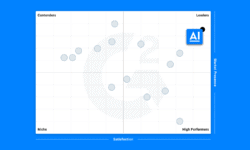This week, The American Society of Clinical Oncology (ASCO) held its annual cancer research conferences, connecting oncology professionals, patient advocates, industry representatives, and major media outlets from around the world. Over the four-day conference, hundreds of presenters took to the virtual and physical stages, sharing their latest findings in competitive and disease-area research.
Within the AlphaSense platform, documents aggregated from ASCO’s conference revealed exciting developments and new data from notable industry companies, including AstraZeneca, Gilead Sciences, Moderna, Novocure, and more.
Digging deeper into broker research, event transcripts, and press releases, we’ve combed through insights that could be potential market opportunities, innovative strategies for conducting business, and more. Discover some of the top takeaways from this year’s ASCO below.
Key Takeaways from ASCO 2023
- The TIGIT debate continued at ASCO, as Ociperlimab (anti-TIGIT) Phase I results provided a potential rationale to evaluate combination with standard of care in front-line gastric cancer.
- Management discussion on BLU-945 monotherapy and osimertinib combo data focuses on favorable WT EGFR-related AE profile and confidence in 1L L858R opportunity. However, transaminase elevations and possible treatment-related deaths are being heavily debated by investors.
- Moderna’s INT is promising but there is still much work to be done.
- Full MIRASOL data was presented to establish Elahere as the new standard of care for FRα-high plat. resistant ovarian cancer. In the presented full dataset, the waterfall plot showed 80% tumor reduction rate, significantly higher than 55% in the control arm, which further demonstrated Elahere’s strong antitumor activity.
“I am thrilled to share these impressive results from the confirmatory MIRASOL trial at ASCO, which further demonstrate the potential of ELAHERE to become the new standard of care for patients with FRα-positive PROC,” said Kathleen Moore, Associate Director of Clinical Research and Director of the Oklahoma TSET/Sarah Cannon Phase I Program, Professor of the Section of Gynecologic Oncology at The University of Oklahoma and MIRASOL Principal Investigator.
“As we saw in the top-line data announced last month, ELAHERE demonstrated an improvement versus chemotherapy across all efficacy endpoints and, importantly, is the first treatment to show an overall survival benefit in this patient population. The 33% reduction in the risk of death, along with the differentiated and well-characterized safety profile seen in MIRASOL, reinforce the potential of ELAHERE to serve as a transformative option for ovarian cancer patients and change how this disease is treated.“
– ImmunGen
- Early dose-escalation data for BLU-451 highlights clinical potential.
“BLU-945, as a monotherapy and in combination with osimertinib, was generally well-tolerated, and AEs associated with wildtype EGFR inhibition were infrequent, with the majority reported as Grade 1. For the combination, the discontinuation rate due to treatment-related AEs was 3.6 percent.”
“BLU-945 monotherapy and the combination showed evidence of clinical activity, with ctDNA clearance and tumor reductions including confirmed partial responses observed in patients whose tumors had progressed following treatment with osimertinib. For combination regimens with a total BLU-945 daily dose of 300 mg or higher, tumor shrinkage was observed in 51 percent of patients with molecularly heterogeneous, osimertinib-refractory, late-line EGFR-mutant NSCLC, with multiple confirmed responses.”
- Gilead’s event mainly focused on NSCLC strategy with three primary components:
- Displace chemotherapy with cancer directed therapy
- Deliver a next generation TIGIT-IO combo therapy
- Study novel combinations
- AstraZeneca’s Phase III TROPION-Lung01 headline data are eagerly awaited in 2nd+line lung cancer (NSCLC), with success widely expected given the low bar set by docetaxel. Competitor TROP2 ADC MRK/Kelun SKB264 received a lot of attention largely due to the pronounced benefit in the EGFR mutant cohort.
- Blueprint Medicines presented initial data for its selective CDK2 inhibitor BLU-222 in patients with advanced solid tumors. Dose escalation results showed early evidence of cell-cycle pathway modulation and clinical activity.
”Results from the ongoing dose escalation part of the VELA trial of BLU-222 (n=27) showed encouraging safety and evidence of cell cycle pathway modulation consistent with the treatment’s best-in-class preclinical profile.”
- KNTE presented a genomic landscape analysis for FGFR-driven cancers. Findings from the GaurdantINFORM clinical genomic research database showed that FGFR2/3 mutations are most common in cholangiocarcinoma, NSCLC, breast, and bladder cancers and that 36% of FGFR2 alterations consist of resistance mutations to 1st gen FGFR inhibitors. Molecular brake and gatekeeper mutations proved to be the most common in cholangiocarcinoma and breast cancer.
- Earlier this year, Zai Lab’s partner Novocure announced that the LUNAR trial on 1L NSCLC had reached its primary endpoint, demonstrating a favorable OS for TTFields therapy added to standard pharmacological therapy.
You can read every event transcript from ASCO here. Not a user? Unlock a free trial of AlphaSense here.




